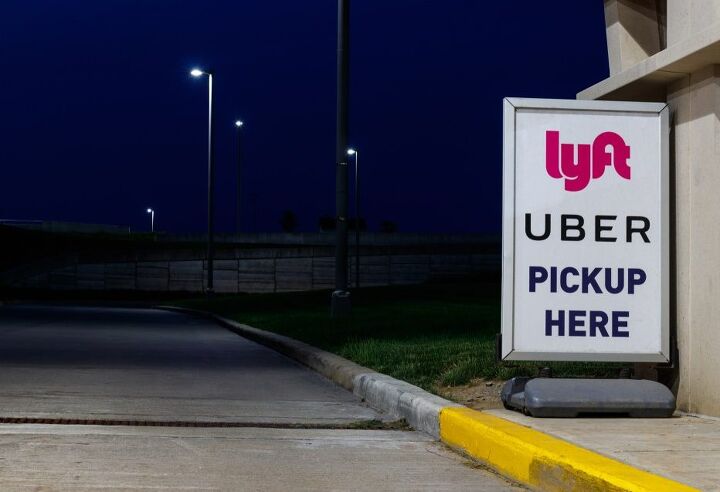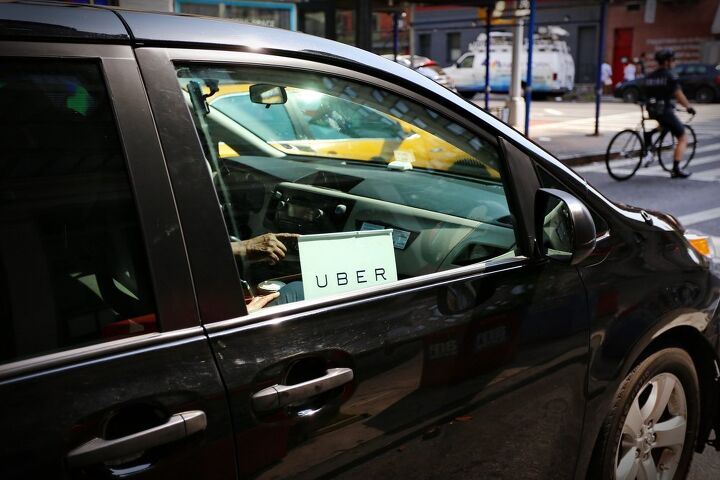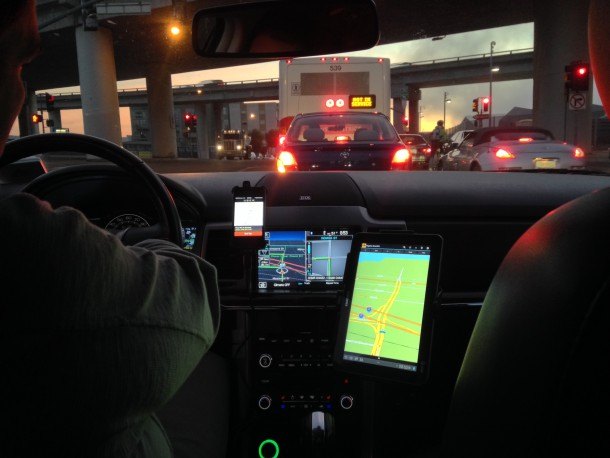#GigEconomy
Rising Fuel Prices Have Upended the Economy
Unless you’ve spent the last twelve months locked inside your home, then you’re probably dreading the next trip to the gas station. The average price for a gallon of 87 octanes has reached $3.40 in the United States. That’s about 50 percent steeper than it was at the start of 2021 and undoubtedly more than you’re wanting to shell out today. Though one cannot ignore the dizzying rates being advertised outside of British “petroleum parlors” or France’s many “un bordel pour voitures.” Canadians are also forced to endure higher gasoline prices, as the government tends to stack the taxes a little higher and the U.S. dollar tends to be more valuable. At least for now.
All you need to know for the purposes of this article is that fuel prices are up and it’s influencing the economy in some pretty dramatic ways.
Uber, Lyft Win in California: Drivers to Remain Contractors
Uber and Lyft stocks saw a bump this week after California passed a ballot measure that will exempt them (and similar businesses) from a state law requiring contracted drivers to be reclassified as employees.
App-based work platforms bent over backward and expended millions to ensure Proposition 22 passed in November, with many suggesting it was the only way to continue operations in the state. It seems those efforts weren’t for nothing. With over 80 percent of votes counted this morning, the California Secretary of State’s Office announced that 58 percent of voters supported the measure with 42 percent against. Ride-hailing platforms will be legally exempt from California’s Assembly Bill 5 and drivers will remain contracted employees.
Uber Drivers Sue, Claim Company Pressured Them to Support Prop 22
A small group of drivers are suing Uber over repetitive in-app messages from the company about Proposition 22, a ballot initiative it would very much like them to support. Considering the deluge of political messages you’re undoubtedly getting on your own cellular device, you’re probably sympathetic to their plight. There are few things more annoying than being constantly reminded about an election nobody seems capable of shutting up about — especially when they can’t seem to get your name right.
But Uber likely crossed a line with its employees. While political action campaigns can inundate you with the most obnoxious and misleading election information, your employer isn’t supposed to. These drivers are claiming Uber violated their employment rights by trying to get them to support a ballot measure it has a vested interest in every time they checked their mobile device to hunt for a fare.
California Rules Uber/Lyft Must Reclassify Drivers
A California appeals court unanimously ruled against ride-hailing giants Uber and Lyft on Thursday, mandating that they would indeed need to reclassify drivers operating within the state as employees.
The duo have been pushing against Assembly Bill 5, which seeks to reclassify contracted, gig-economy workers as fully fledged employees entitled to all the associated benefits, all year. California even sued Uber and Lyft in May for refusing to comply with with the order but they’ve claimed AB5 will severely hinder (if not eliminate) their ability to operate within the state and have backed a measure called Proposition 22 that would grant them special exceptions.
Uber, Lyft Spending Big to Fight Californian Gig Economy Laws
Lyft Abandons Operations in California Following Court Decision
As Uber contemplates ways to avoid having to close up shop in California following the passing Assembly Bill 5, Lyft is simply suspending operations as it waits to see how the appeals process works out.
On Thursday, the fuchsia-themed ride-hailing firm said it would not be able to maintain business as usual in the Golden State, citing several of the reasons we prognosticated in yesterday’s article about Uber mulling a franchise model. Included in the release was an inability to hire enough drivers in a manner that would appease the new law, resulting in reduced service (especially in suburban and rural areas), and a pricing increase deemed unfeasible for existing customers if implemented.
Uber Considers Franchise Model After California Cracks Down on Contractors
California took on the gig economy by passing updated labor laws (Assembly Bill 5) mandating companies treat contractors more like regular employees. Some predicted this would be the death knell for ride-hailing firms like Uber and Lyft, who are entirely dependent on them for their daily operations. Worse still, these companies remain unprofitable despite most of the the physical expenses being pushed onto drivers — who remain responsible for the upkeep of their own vehicles after receiving their cut of the fare.
Earlier this month, Uber CEO Dara Khosrowshahi published an op-ed in The New York Times suggesting contractors deserved better, but current circumstances dictated that the situation remain largely unchanged. He later suggested the service might have to leave California as it restructured its business model to appease new rules, saying it had to reclassify drivers as employees with all the accompanying benefits (paid leave, minimum wage, unemployment insurance, etc). San Francisco Superior Court Judge Ethan P. Schulman said that would be fine last week when he ruled that Uber and Lyft drivers were essential to operations and could not be treated as tangential to the business. He wanted to be absolutely clear that exemptions would not be made for ride-hailing firms, stating that it was “high time that they face up to their responsibilities to their workers and to the public.”
Uber lost $8.5 billion in 2019, making it difficult to envision a future where it can begin offering more to its drivers. But it also doesn’t want to lose out on market share as the industry jockeys for position. There needs to be another solution.
What about moving to a franchise model?
Uber Drivers Protest Ahead of Friday's IPO
Uber and Lyft drivers from the world over are going on strike today to protest the company’s working conditions and pay. However, the careful timing of the event also appears to be aimed at torpedoing the brand’s fast-approaching IPO.
While Uber exists as a corporate middle man between riders hunting for a vehicle and drivers seeking a fare, the company’s official position is that both are customers. As Uber sees it, it’s providing both with access to its platform and thereby offering a service. But many drivers disagree and claim the only way to make a living is to work ludicrously long hours, which they believe should at least entitle them to be called employees and warrant some benefits.
From Contractor to Employee: California Ruling Poised to 'Decimate' Uber, Lyft
An April ruling from the California Supreme Court determined that most contract workers, including those partnered with ride-hailing companies like Uber and Lyft, could actually qualify as employees under the state’s wage laws.
While that’s great in an era when wages can’t seem to match the constantly ascending cost of living and companies are cutting corners to maximize profits, it’s not so great for outfits that depend on contract workers to exist — like the aforementioned ride-hailing firms.
Uber and Lyft managed to balloon their revenues far beyond the billion-dollar mark, but neither company is currently profitable. Despite taking a cut of every single fare, expenses still result in a net loss for the companies during most rides. Assuming California forces them to tack on employee benefits and all the associated trimmings, both businesses could be in for a world of hurt.
General Motors Embraces Underemployment With Maven Gig
Car sharing is one of the cornerstones of automakers’ newfound focus on mobility solutions. It’s a brave new world for vehicle manufacturers, but it’s also a brave new world for consumers. With roughly 22 million American’s underemployed — that’s people with jobs that don’t provide adequate income, full-time hours, or exist outside the hire’s experience/education — many people have taken on part-time work to fill in the gaps.
Taking advantage of this unique workforce, Maven, General Motors’ mobility arm, is launching Maven Gig, providing part-timers with weekly access to its fleet of Bolt EVs. Gig functions similarly to Maven City and GM’s Express Drive partnership with Lyft, but is specifically designed for renters who don’t own a vehicle and might want to spend a week delivering pizza or working for a ride-hailing service on an extremely limited basis.
An interesting idea, but a bit of an odd duck at $229 a week. GM is pitching it as a way to “enable freelancers to earn income through multiple sources.”






















Recent Comments